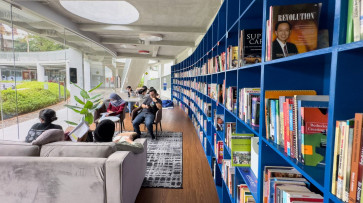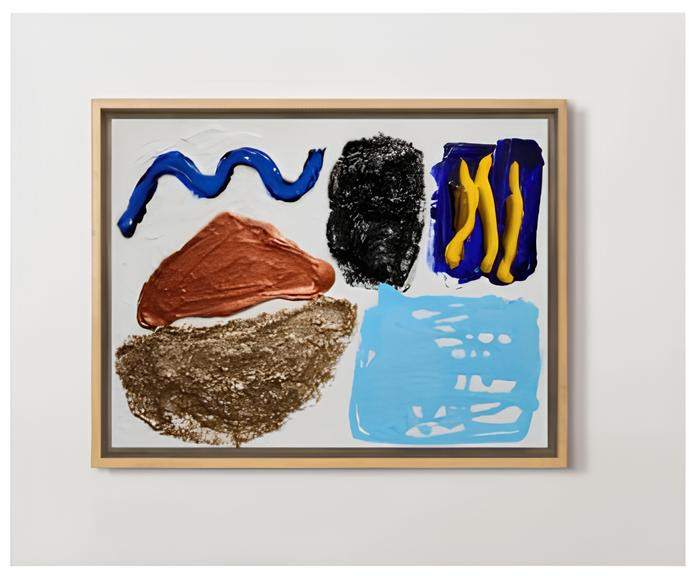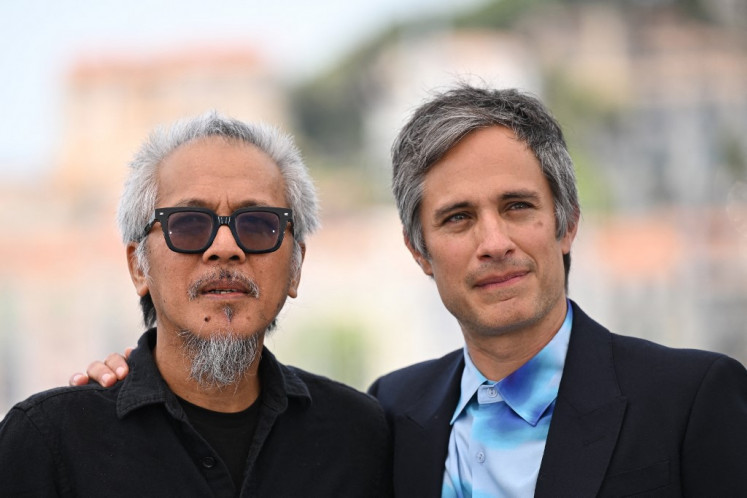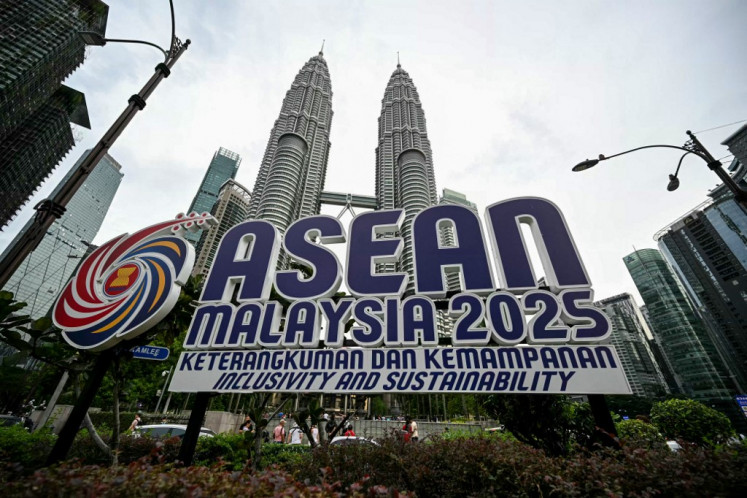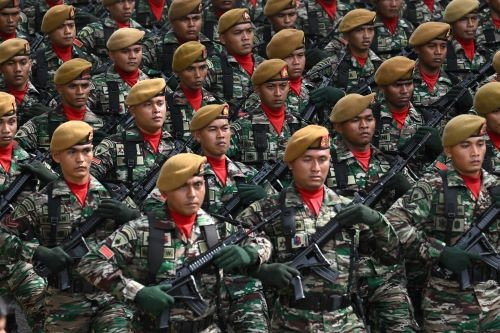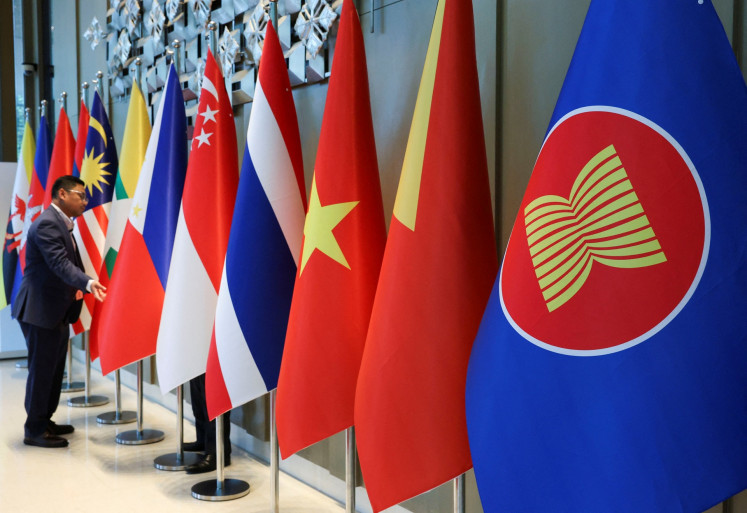Pintu Besar Selatan street gallery: The hub of affordable aesthetics
A number of paintings are hung on the wall, mostly portraits, some about nature and humans, drawn in the realist style on canvas and on paper. Several painters are seen busy with their own canvases, while others are chatting with one another as they are surrounded by visitors who stop occasionally to observe the paintings.
Change text size
Gift Premium Articles
to Anyone
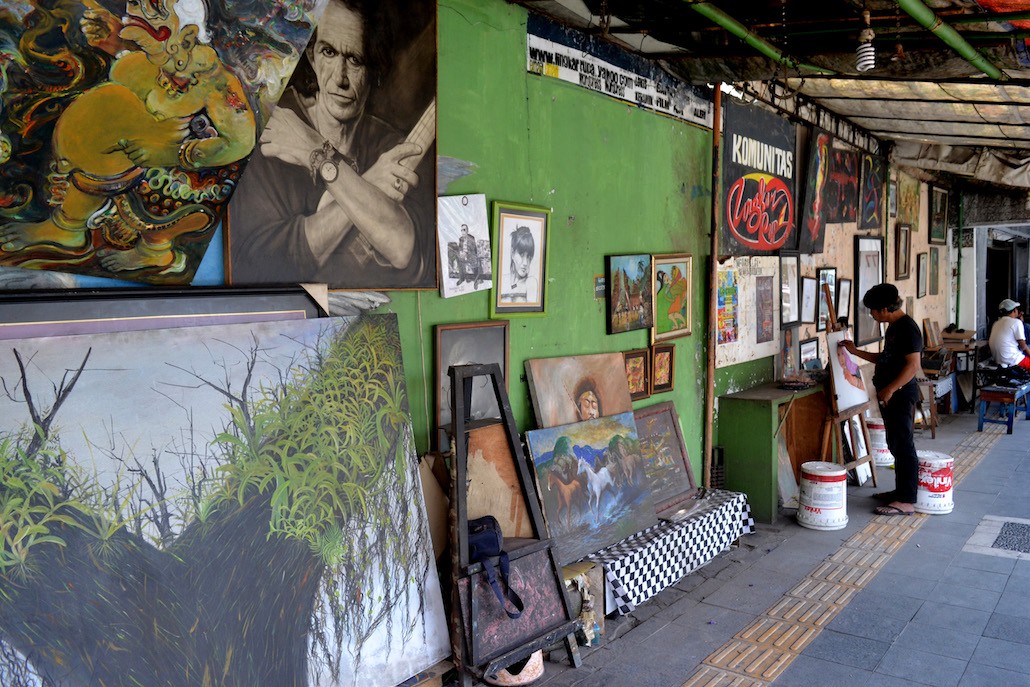 The sidewalk that is utilized by the artists as their studio and gallery. (JP/Stefanus Ajie)
The sidewalk that is utilized by the artists as their studio and gallery. (JP/Stefanus Ajie)
A
number of paintings are hung on the wall, mostly portraits, some about nature and humans, drawn in the realist style on canvas and on paper. Several painters are seen busy with their own canvases, while others are chatting with one another as they are surrounded by visitors who stop occasionally to observe the paintings.
It’s a typical day at the open-air art gallery and studio, located near Kota Tua in Jakarta, on a sidewalk along Jl. Pintu Besar Selatan, Jakarta. The now-defunct buildings serve as a sanctuary for street artists, with their walls adorned with works of art, not to be missed when you visit Kota Tua or Glodok.
Portrait paintings are the main theme and naturalist is the style preferred by the artists who occupy the Pintu Besar Selatan sidewalks. Other themes on display include natural landscapes, animals and flowers. The artists also take commissioned work, drawing portraits of visitors, or those of famous figures such as Albert Einstein, Che Guevara and Bob Marley. The faces of famous Indonesians are also seen as inspirations, mainly Sukarno and President Joko “Jokowi” Widodo.
Read also: Yogyakarta village craftsmen uphold mask-making tradition
Starting from Rp. 300,000,- (US$22) you can have a canvas painting of your face. Prices may vary, depending on the canvas size and the medium used. For instance, acrylic or oil paint on canvas is more expensive on account of the difficulty level and also because the paints are more expensive compared to the drawings done with charcoal or pencil.
Kamijan, among artists that have been painting at Pintu Besar Selatan since the 1990s, said being a street artist brought him joy. “There are high and lows, but [it’s] enough for everyday life. I am happy enough to be able to get my income from doing my hobby and that is painting. I can hang out here every day, painting with my fellow artists,” he said.
Not all street artists learn by ear. Kamijan, for instance, had formal art training from SMSR (Arts Middle School) in Yogyakarta in the 1980s.
Although his income is a far cry from the average price of artwork sold in Jakarta’s glitzy art galleries, the feeling of being appreciated by others is what motivates Kamijan and his fellow artists to be productive. “On the days that I have many orders, I can generate Rp 5 to 6 million a month,” he added.
Kamijan and his friends are living proof of the sustainable attempt at fulfilling the public’s need for aesthetics with affordably priced artwork. (asw)



